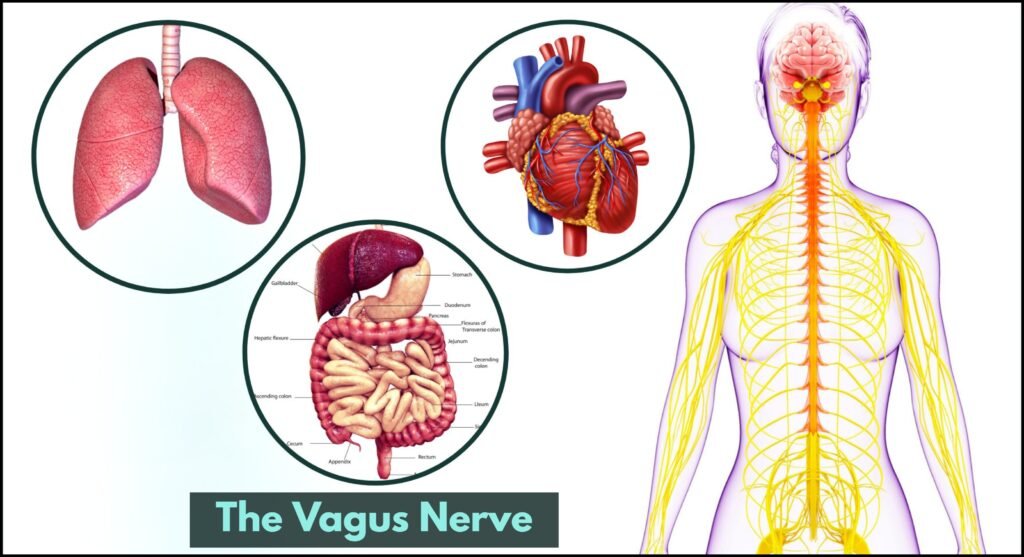GLP-1 for Seniors: A Game-Changer for Weight, Blood Sugar & Cognitive Health

Last Updated on June 27, 2025 by Julian Espinosa
Have you noticed that maintaining your weight feels more challenging now than it did in your younger years? Or perhaps keeping your blood sugar levels steady has become an ongoing concern? You’re not alone—these changes are common as we age, but exciting new developments in medical science offer hope.
GLP-1 (Glucagon-Like Peptide-1) represents one of the most promising breakthroughs in modern healthcare, particularly for mature adults seeking to maintain their health and vitality. This naturally occurring hormone, which your body already produces, plays a crucial role in blood sugar regulation, appetite control, and emerging research suggests it may even support brain health.
In this comprehensive guide, you’ll discover how GLP-1 works in your body, who might benefit from GLP-1 medications, and practical ways to naturally boost your body’s own GLP-1 production through specific foods. We’ll also explore the latest research on how these treatments might support cognitive function—an area of particular interest as we age.
Whether you’re managing type 2 diabetes, seeking support for healthy weight management, or simply curious about cutting-edge approaches to healthy aging, this information could be valuable for your health journey. We’ll cover both the promising benefits and important considerations, including potential side effects that are especially relevant for older adults.
The world of health and wellness continues to evolve, and understanding these advances can help you make informed decisions about your care. Let’s explore how GLP-1 might fit into your path toward maintaining an active, healthy lifestyle in your retirement years.
In this post, we’ll dive into:
✅ A surprising way to help control blood sugar and appetite naturally
✅ How some people are using this method to lose weight without extreme dieting
✅ The unexpected connection between this breakthrough and brain health
✅ What the experts are saying—and what you should know before considering it
If you’re curious about how this cutting-edge health trend could fit into your lifestyle, keep reading. The answer might be simpler (and more exciting) than you think!

What’s the Buzz About GLP-1?
The health and wellness world is buzzing with excitement about the hormone GLP-1, and for good reason. If you’re over 50 and looking for new approaches to manage blood sugar, support healthy weight management, or even protect your cognitive health, this breakthrough deserves your attention.
What Exactly is GLP-1?
GLP-1 stands for Glucagon-Like Peptide-1—a peptide hormone your body naturally produces that acts like a master regulator for several important functions. Think of it as your body’s own traffic controller, helping manage the flow of sugar in your bloodstream while also influencing how hungry you feel.
This remarkable peptide hormone is made up of amino acids, essentially making it a specialized protein with significant impact on your metabolism. When you eat, cells in your small intestine release GLP-1, which then gets to work on three important tasks:
First, it signals your pancreas to release insulin when your blood sugar rises. This helps your cells absorb sugar from your bloodstream more effectively. Second, it slows down digestion, creating a more gradual and manageable rise in blood sugar levels instead of those sharp spikes that can leave you feeling drained. Finally, it reduces the production of glucagon, a hormone that can cause your liver to release excess sugar into your bloodstream.
Now, let’s break down the specific roles of GLP-1 in more detail. Here are some of its key functions:
Key Functions of GLP-1 in Your Body
- Blood Sugar Control The primary role of GLP-1 is maintaining healthy blood sugar levels. This hormone enhances insulin release when blood sugar rises while suppressing glucagon production, creating a more balanced glucose environment in your body. For those managing type 2 diabetes, this function is particularly valuable.
- Appetite Regulation By slowing digestion, GLP-1 helps you feel satisfied longer after meals. This natural appetite control can make it easier to maintain healthy eating patterns without the constant battle against hunger that many experience when trying to manage their weight.
- Heart Health Support Recent studies suggest GLP-1 may offer cardiovascular benefits by helping to lower blood pressure, improve cholesterol levels, and reduce inflammation in blood vessels. Given that heart health becomes increasingly important as we age, this is an encouraging development.
- Brain Protection Benefits Perhaps most exciting is the emerging research on cognitive benefits. Recent clinical trials have shown that GLP-1 drugs may slow cognitive decline by protecting the brain, with one study finding 18% slower decline in cognitive function after one year of treatment. The treatment also slowed the shrinking of certain parts of the brain, offering hope for maintaining mental sharpness as we age.
Who Can Benefit from GLP-1 Drugs?
About one in eight adults (12%) have tried a GLP-1 medication, and this number continues to grow as more people discover the potential benefits.

Adults with Type 2 Diabetes
GLP-1 medications are primarily prescribed for type 2 diabetes management. They help stabilize blood sugar levels while potentially reducing the need for additional medications. Studies show these treatments not only improve glucose control but also offer cardiovascular protection, crucial for diabetic patients who face higher risks of heart-related issues.
Seniors Seeking Weight Loss
Because GLP-1 medications help reduce hunger and slow digestion, they can be valuable tools for healthy weight management. When combined with balanced nutrition and regular physical activity, these medications can help you feel satisfied with smaller portions.
For older adults, achieving and maintaining a healthy weight can improve mobility, enhance balance, and reduce the risk of falls—important considerations for maintaining independence and quality of life.
Potential Heart and Brain Protection
Emerging research indicates promising benefits beyond blood sugar and weight management. Studies involving people with cardiovascular history have shown reduced rates of subsequent heart attacks and strokes among those using GLP-1 medications.
Most intriguingly, large-scale studies have found associations between GLP-1 treatments and reduced risk of developing Alzheimer’s disease, highlighting potential neuroprotective effects. While more research is needed, these findings are encouraging for those concerned about maintaining cognitive health.
Understanding the Side Effects of GLP-1 Drugs
Like any medication, GLP-1 treatments can have side effects, and it’s important to understand them, especially as an older adult.
Common Side Effects:
- Nausea: Many people experience this initially, but it often diminishes as your body adjusts
- Digestive changes: Including diarrhea or stomach discomfort, typically temporary
- Feelings of fullness: Sometimes accompanied by bloating
Serious Side Effects (Rare):
- Pancreatitis: While rare, inflammation of the pancreas is a serious concern requiring immediate medical attention
- Kidney function: Dehydration from digestive side effects can impact kidney health, making proper hydration essential
- Vision changes: Some studies have linked GLP-1 drugs to eye conditions that can affect vision, making regular eye exams important

For older adults, additional factors include:
- Weight Loss Effects
- While weight loss can be beneficial, rapid weight loss may lead to muscle and bone mass reduction, increasing the risk of falls.
- Bone Health
- There’s a need for more research on how GLP-1 drugs affect bone density and fracture risk in older adults. The Lancet
It’s vital for seniors to discuss with healthcare providers:
- Comprehensive Health Assessment
- Evaluating overall health, including kidney and eye function, to tailor treatment plans.
- Monitoring
- Regular check-ups to monitor for any adverse effects and adjust medication as needed.
- Lifestyle Integration
- Incorporating these medications into a holistic approach that includes diet, exercise, and other lifestyle modifications.
Special Considerations for Mature Adults
Weight loss, while often beneficial, can sometimes lead to muscle and bone mass reduction if it occurs too rapidly. This can increase fall risk, making it crucial to maintain strength training and adequate protein intake alongside treatment.
GLP-1 receptor agonists offer significant benefits for blood sugar control and weight management in seniors. However, being informed about potential side effects and working closely with healthcare providers ensures these medications contribute positively to your health and well-being.
Power Up Your Natural GLP-1: The Food Factor!
You don’t need a prescription to start supporting your body’s GLP-1 production. Certain foods can naturally stimulate this beneficial hormone, helping you manage blood sugar and appetite while supporting overall health.
Protein Powerhouses Starting your day with eggs provides high-quality protein and healthy fats that enhance GLP-1 levels. Research shows that egg-based breakfasts can lead to more gradual blood sugar rises and longer-lasting satisfaction throughout the day.
Healthy Fats That Satisfy Avocados and extra virgin olive oil are rich in monounsaturated fats that support GLP-1 secretion. These Mediterranean diet staples not only enhance hormone production but also support heart health and improve insulin sensitivity.
Fiber-Rich Champions Whole grains like oats and barley, along with nuts such as almonds and walnuts, provide soluble fiber that plays a crucial role in GLP-1 regulation. This type of fiber slows glucose absorption, creating more controlled blood sugar responses.
Vegetable Variety Colorful vegetables like Brussels sprouts, broccoli, and carrots offer both fiber and essential nutrients that influence GLP-1 release. Consuming vegetables before carbohydrate-rich foods can significantly enhance both glucose control and hormone response.
How These Foods Work Their Magic When you eat foods rich in certain nutrients—including healthy fats, fiber, and specific amino acids—your gut bacteria work to ferment these components, producing short-chain fatty acids. These compounds then signal specialized cells in your intestine to release GLP-1 into your bloodstream, naturally supporting blood sugar regulation and appetite control.
Incorporating GLP-1-Boosting Foods into Your Diet
Incorporating GLP-1-boosting foods into your daily routine is both delicious and straightforward:
- Snacks: Choose satisfying options like a handful of almonds or a hard-boiled egg
- Morning: Enjoy steel-cut oats topped with chopped walnuts and a side of avocado toast
- Midday: Create colorful salads with leafy greens and varied vegetables, dressed with olive oil-based vinaigrettes
- Evening: Pair lean proteins with steamed vegetables and quinoa for balanced nutrition
The Takeaway
The landscape of healthy aging continues to evolve, and GLP-1 represents one of the most exciting developments for mature adults seeking to maintain their vitality. Whether through natural food choices or medical treatments, supporting your body’s GLP-1 function could be a valuable addition to your health strategy.
Have you tried incorporating any of these GLP-1-supporting foods into your daily meals? Are you curious about discussing GLP-1 medications with your healthcare provider? We’d love to hear about your experiences and questions—share your thoughts in the comments below!
FAQ: GLP-1 Benefits
- Are GLP-1 medications safe for people over 65?
- GLP-1 medications can be prescribed for older adults, but require careful monitoring. Your healthcare provider will consider your overall health, kidney function, and other medications before recommending treatment. Regular check-ups are essential to monitor for side effects and ensure the medication is working effectively for you.
- How long does it take to see results from GLP-1 medications?
- Most people begin noticing appetite changes within the first few weeks, while blood sugar improvements typically become apparent within 2-3 months. Weight changes, if desired, usually become noticeable after 2-4 months of consistent treatment combined with healthy lifestyle choices.
- Can I stop taking GLP-1 medications once I reach my health goals?
- This decision should always be made with your healthcare provider. Some people may be able to transition to lifestyle management alone, while others benefit from continued treatment. Your doctor will help determine the best long-term strategy based on your individual health needs.
- Do GLP-1 medications interact with other common medications seniors take?
- GLP-1 medications can interact with certain drugs, particularly those for diabetes and blood pressure. It’s crucial to provide your healthcare provider with a complete list of all medications, supplements, and over-the-counter drugs you’re taking before starting treatment.
- How expensive are GLP-1 medications, and does Medicare cover them?
- Medicare coverage varies, with some GLP-1 drugs covered for diabetes treatment. Coverage for weight management purposes is more limited. Many manufacturers offer patient assistance programs, and your healthcare provider can help you explore cost-effective options.
- Can I boost my natural GLP-1 production if I’m already taking medications?
- Yes! Eating GLP-1-supporting foods can complement medical treatment and may enhance its effectiveness. Focus on high-fiber foods, healthy fats, and lean proteins. Always discuss dietary changes with your healthcare provider to ensure they align with your treatment plan.
- Are there any foods I should avoid while focusing on GLP-1 support?
- While no foods are strictly forbidden, limiting highly processed foods, excessive sugar, and refined carbohydrates can help optimize your body’s natural GLP-1 response. Focus on whole, nutrient-dense foods for the best results.
- What’s the difference between natural GLP-1 support through food and medication?
- Food-based approaches support your body’s natural hormone production, while medications provide synthetic versions that are longer-lasting and more potent. Many people find success combining both approaches under medical supervision.
REFERENCES
- Alzheimer’s Association International Conference. “GLP-1 drug liraglutide may protect against dementia.” July 30, 2024.
- CNN Health. “Ozempic predecessor suggests potential for GLP-1 drugs in Alzheimer’s in early trial.” July 30, 2024.
- CNBC. “Older GLP-1 drug from Novo Nordisk may slow Alzheimer’s disease progression by protecting the brain.” July 30, 2024.
- KFF Health Tracking Poll. “The Public’s Use and Views of GLP-1 Drugs.” May 2024.
- STAT News. “Medicare already covers GLP-1s for half of seniors with obesity, new report finds.” October 9, 2024.
- University of North Carolina Department of Medicine. “Why are GLP-1 Drugs Like Ozempic Risky for Older Adults?” June 10, 2024.
- Wang, et al. “Associations of semaglutide with first‐time diagnosis of Alzheimer’s disease in patients with type 2 diabetes.” Alzheimer’s & Dementia, 2024.
- StatPearls – NCBI Bookshelf. “Glucagon-Like Peptide-1 Receptor Agonists.” Updated 2024.





